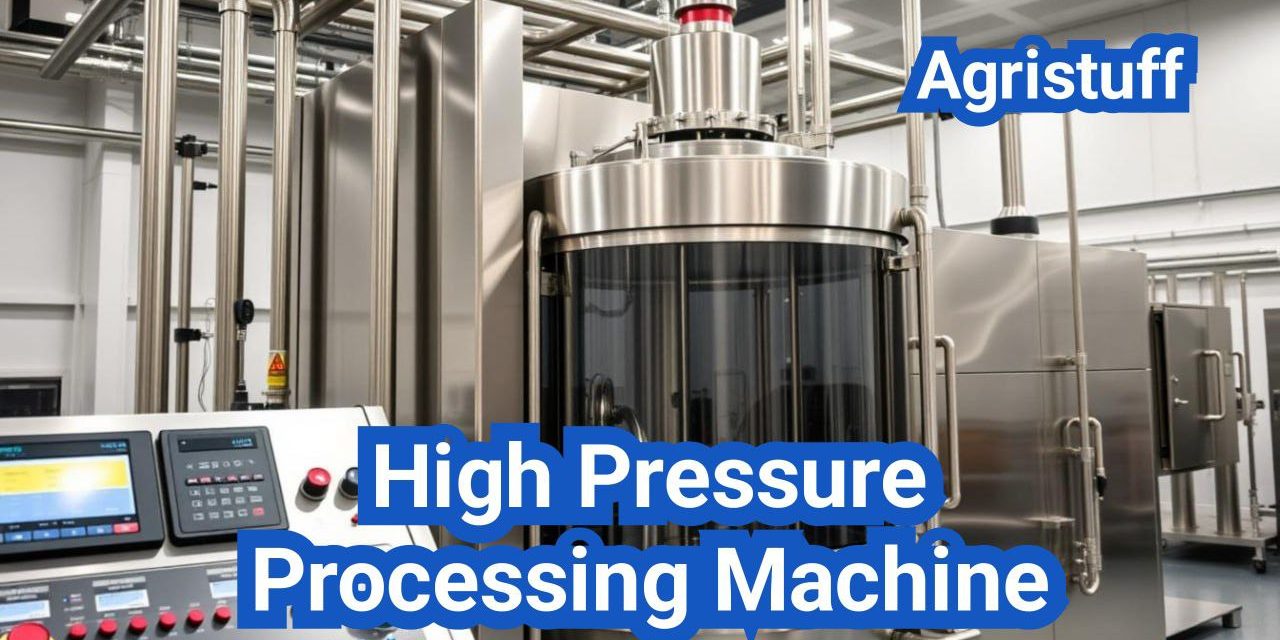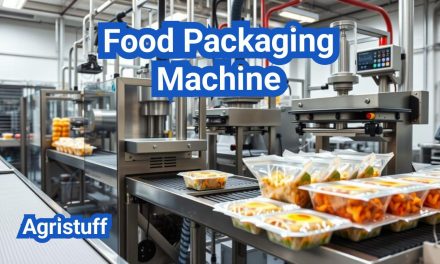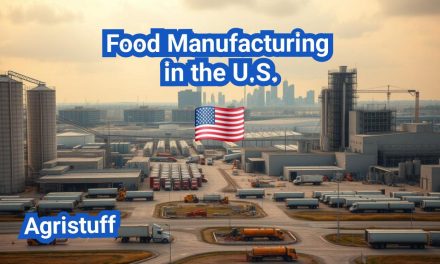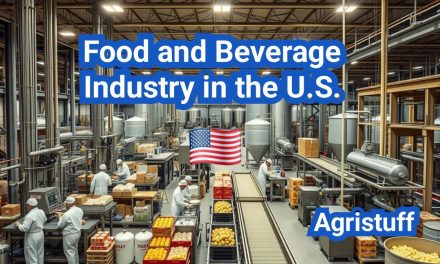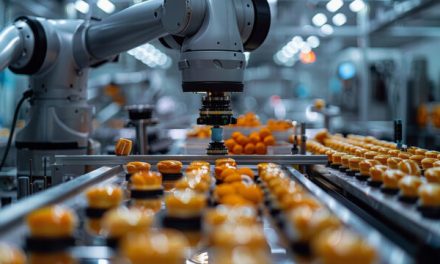The food industry is witnessing a significant shift towards High Pressure Processing Machine (HPP), a technology that ensures food safety without compromising on quality.
The HPP market was valued at USD 512.8 million in 2023 and is expected to grow at a CAGR of 4.5% during the forecast period. For U.S. brands, understanding the costs, capacity, and return on investment (ROI) of HPP machines is crucial for making informed decisions.
Key Takeaways
- Understanding HPP technology and its benefits
- Evaluating the costs associated with HPP machines
- Assessing the capacity of HPP machines for production needs
- Calculating the ROI for HPP investments
- Considering the future growth of the HPP market
Understanding High Pressure Processing Technology
High Pressure Processing is a cutting-edge technology that eliminates pathogens and spoiling organisms without compromising the nutritional or taste value of food. This method has gained significant attention in the food industry due to its ability to ensure food safety while maintaining product quality.
What is HPP and How Does It Work?
High Pressure Processing involves subjecting food products to extremely high pressures, typically between 400 and 600 MPa, for a specified duration. This process inactivates harmful bacteria, viruses, and other microorganisms, thereby extending the shelf life of the product.
The HPP process is carried out in a specially designed vessel where the food is sealed in flexible packaging and then subjected to high pressure. The pressure is transmitted uniformly throughout the product, ensuring consistent treatment.
The Science Behind Pressure-Based Pasteurization
The science behind HPP is based on the principle of pressure-based pasteurization. When food is subjected to high pressure, the cellular structure of microorganisms is disrupted, leading to their inactivation. This process does not involve heat, thus preserving the food’s nutritional and sensory qualities.
“HPP technology has revolutionized the way we preserve food, offering a non-thermal alternative that maintains the product’s natural taste and nutritional value.”
Key Benefits for Food Safety and Shelf Life
The application of HPP technology offers several key benefits, including enhanced food safety and extended shelf life. By eliminating pathogens and spoiling organisms, HPP ensures that food products are safe for consumption over a longer period.
| Benefits | Description |
|---|---|
| Enhanced Food Safety | Elimination of pathogens and spoiling organisms |
| Extended Shelf Life | Products remain safe and fresh for longer durations |
| Preservation of Nutritional Value | Non-thermal process maintains nutritional qualities |
By understanding the principles and benefits of High Pressure Processing technology, food manufacturers can make informed decisions about implementing this innovative preservation method.
Evolution of HPP Technology in the U.S. Food Industry

Advancements in HPP equipment have transformed the U.S. food manufacturing landscape, offering enhanced food safety and extended shelf life. This transformation is the result of decades of research and development in High Pressure Processing technology.
Historical Development of HPP Technology | High Pressure Processing Machine
The concept of HPP was first explored in the late 19th century, but it wasn’t until the 1990s that the technology began to be commercialized for food processing. Early adopters in the U.S. were primarily juice manufacturers, drawn by HPP’s ability to ensure product safety without compromising quality.
Key milestones in the historical development include:
- The first commercial HPP unit was installed in the U.S. in 1996.
- Initial applications focused on juice processing, with companies like Avure Technologies (now part of Frontmatec) pioneering HPP equipment.
- As technology improved, HPP began to be adopted by other sectors, including meat and ready-to-eat products.
Current Market Penetration in U.S. Food Manufacturing | High Pressure Processing Machine
Today, HPP technology is widely adopted across various sectors of the U.S. food industry. The market penetration is driven by consumer demand for safer, higher-quality products and the need for manufacturers to comply with stringent food safety regulations.
The U.S. HPP systems market is experiencing transformative growth, driven by technological innovation and shifting consumer behaviors. According to industry reports, the adoption of HPP technology is expected to continue growing as more manufacturers recognize its benefits.
Leading HPP Equipment Manufacturers in America
Several manufacturers are at the forefront of HPP technology in the U.S. These include:
- Avure Technologies (part of Frontmatec): Known for their comprehensive range of HPP systems.
- Hiperbaric: A global leader in HPP technology, with a significant presence in the U.S. market.
- UHDE High Pressure Technologies: Offers advanced HPP solutions tailored to various food processing needs.
These manufacturers are continually innovating, offering more efficient and effective HPP solutions that cater to the evolving needs of the U.S. food industry.
How to Select the Right High Pressure Processing Machine
Selecting the ideal HPP equipment requires a thorough assessment of production needs and machine specifications. To make an informed decision, food manufacturers must consider several key factors that impact the efficiency and effectiveness of their HPP operations.
Assessing Your Production Requirements | High Pressure Processing Machine
Before choosing an HPP machine, it’s essential to evaluate your production requirements. This includes determining the volume of products to be processed, the frequency of production runs, and any specific product handling needs. Accurate assessment of production needs helps in selecting a machine that can handle the workload without compromising on quality or efficiency.
Consider the types of products you will be processing and their specific requirements. For instance, products with delicate textures or flavors may require gentler processing conditions. Understanding your product portfolio is crucial for matching machine capabilities with product needs.
Matching Machine Specifications to Product Types | High Pressure Processing Machine
Different HPP machines are designed to handle various product types and processing requirements. When matching machine specifications to your product types, consider factors such as vessel size, pressure capacity, and cycle time. A machine with the right specifications will ensure optimal processing conditions for your products.
| Product Type | Ideal Vessel Size | Pressure Requirement |
|---|---|---|
| Juice and Beverages | 100-200 liters | 400-600 MPa |
| Meat and Poultry | 200-400 liters | 600 MPa |
| Ready-to-Eat Meals | 150-300 liters | 500-600 MPa |
Key Features to Consider in HPP Equipment
When evaluating HPP equipment, several key features should be considered. These include the machine’s pressure capacity, vessel size, and automation capabilities. Advanced automation features can significantly enhance processing efficiency and reduce labor costs.
Other important features include the material of construction, ease of cleaning, and integration with existing production lines. Ensuring that the HPP machine is compatible with your production infrastructure is vital for seamless operations.
Evaluating Manufacturer Support and Service | High Pressure Processing Machine
The level of support and service provided by the HPP machine manufacturer is a critical factor in the selection process. Look for manufacturers that offer comprehensive training, regular maintenance services, and prompt technical support. Reliable manufacturer support can minimize downtime and ensure that your HPP operations run smoothly.
It’s also important to consider the manufacturer’s reputation, experience in the industry, and customer testimonials. A manufacturer with a proven track record of delivering high-quality HPP machines and excellent customer service can provide long-term value to your business.
Types of HPP Systems Available in the U.S. Market

The U.S. HPP market provides a broad spectrum of systems, from industrial-scale machines to laboratory units. This diversity allows businesses to choose the most suitable HPP technology for their specific needs, whether it’s for large-scale production or research and development purposes.
Industrial-Scale HPP Systems | High Pressure Processing Machine
Industrial-scale HPP systems are designed for high-volume production and are typically used by large food manufacturers. These machines offer high throughput and are capable of processing large quantities of product in a single cycle. Key features include:
- Large vessel sizes (often 300 liters or more)
- High production capacity
- Advanced automation for efficient operation
- Robust construction for continuous use
Leading manufacturers such as Hiperbaric and Avure Technologies offer industrial-scale HPP systems that cater to the needs of major food producers in the U.S.
Mid-Range Production Equipment | High Pressure Processing Machine
Mid-range HPP equipment is suitable for businesses with moderate production needs. These systems offer a balance between capacity and cost, making them ideal for growing companies or those looking to expand their product lines. Characteristics include:
- Vessel sizes typically ranging from 100 to 300 liters
- Flexibility for various product types
- Efficient operation with moderate energy consumption
- Scalability for future production increases
| Feature | Industrial-Scale | Mid-Range |
|---|---|---|
| Vessel Size (liters) | 300+ | 100-300 |
| Production Capacity | High | Moderate |
| Automation Level | Advanced | Standard |
Small High Pressure Processing Machines | High Pressure Processing Machine
Small HPP machines are designed for smaller producers, research institutions, or pilot-scale production. These compact systems are ideal for businesses looking to test HPP technology or produce limited quantities of HPP-treated products. Key benefits include:
- Compact footprint for smaller facilities
- Lower initial investment
- Flexibility for product development and testing
- Ease of operation and maintenance
Laboratory and R&D Units | High Pressure Processing Machine
Laboratory and R&D HPP units are designed for research purposes, product development, and small-scale production. These systems allow for the exploration of HPP technology in a controlled environment. Features typically include:
- Small vessel sizes (often less than 100 liters)
- Precise control over processing parameters
- Flexibility for various research applications
- Integration with other laboratory equipment
By offering a range of HPP systems, the U.S. market caters to diverse needs across different industries and production scales, from large industrial operations to small research facilities.
Comprehensive Cost Analysis of HPP Machines
Investing in High Pressure Processing (HPP) equipment involves a complex financial analysis that goes beyond the initial purchase price. Businesses must consider various cost factors, including initial investment, installation, operational expenses, and maintenance, to make informed decisions.
Initial Investment Requirements | High Pressure Processing Machine
The initial investment for HPP machines can range from hundreds of thousands to millions of dollars, depending on the capacity and features of the equipment. Capacity is a critical factor that influences the cost, with larger machines capable of processing more product at once commanding higher prices.
For instance, a small-scale HPP machine suitable for research and development or small-batch production might start at around $200,000. In contrast, industrial-scale HPP systems designed for high-volume production can cost upwards of $1 million or more.
Installation and Facility Modification Costs | High Pressure Processing Machine
Installation costs for HPP machines can be substantial and vary based on the existing infrastructure of the facility. Facility modifications may be necessary to accommodate the HPP equipment, including reinforced flooring, electrical upgrades, and water supply adjustments.
These costs can add tens of thousands to hundreds of thousands of dollars to the initial investment, depending on the complexity of the required modifications.
Operational Expenses and Maintenance | High Pressure Processing Machine
Operational expenses for HPP machines include energy consumption, maintenance, and labor costs. While HPP is considered energy-efficient compared to some traditional processing methods, the energy required to generate high pressure can still be significant.
Regular maintenance is crucial to ensure the longevity and efficiency of HPP equipment. This includes routine checks, replacement of wear parts, and occasional overhaul of major components.
Cost Comparison Between Different Manufacturers | High Pressure Processing Machine
Different manufacturers may offer HPP machines with varying features, capacities, and pricing. A detailed comparison of these factors is essential to identify the most cost-effective solution for a specific business need.
| Manufacturer | Model | Capacity (liters) | Price Range |
|---|---|---|---|
| Avure Technologies | AV-30 | 30 | $250,000 – $350,000 |
| Hiperbaric | Hiperbaric 55 | 55 | $300,000 – $450,000 |
| UHDE High Pressure Technologies | UHDE 135 | 135 | $500,000 – $700,000 |
Capacity and Throughput Considerations

To maximize the benefits of HPP technology, manufacturers must carefully evaluate the machine’s capacity and throughput metrics. Understanding these factors is crucial for matching production needs with the appropriate HPP machine capacity.
Understanding HPP Machine Throughput Metrics
Throughput metrics for HPP machines are typically measured in terms of the volume of product processed per hour. Key metrics include:
- Cycles per hour
- Liters or pounds processed per cycle
- Overall equipment effectiveness (OEE)
These metrics help manufacturers understand the efficiency and productivity of their HPP systems.
Matching Production Needs with Machine Capacity | High Pressure Processing Machine
To ensure optimal production, it’s essential to match the HPP machine capacity with your production needs. This involves:
- Assessing current and future production volumes
- Evaluating the types of products to be processed
- Considering the available operational hours
By aligning machine capacity with production requirements, manufacturers can avoid underutilization or overcapacity issues.
Scaling Considerations for Growing Brands | High Pressure Processing Machine
For growing brands, scalability is a critical factor when selecting an HPP machine. Considerations include:
- The ability to upgrade or expand the HPP system
- Flexibility in processing different product types
- Compatibility with future production technologies
Scalable HPP solutions allow businesses to adapt to changing production demands without significant capital reinvestment.
Optimizing Production Scheduling for Maximum Efficiency | High Pressure Processing Machine
Optimizing production scheduling is vital for maximizing the efficiency of HPP operations. Strategies include:
- Implementing just-in-time production scheduling
- Minimizing changeover times between different products
- Utilizing predictive maintenance to reduce downtime
By streamlining production schedules, manufacturers can increase throughput and reduce operational costs.
Calculating Return on Investment for High Pressure Processing Machine

To make an informed decision about adopting HPP technology, manufacturers must first understand how to calculate its ROI. The return on investment for HPP machines can be significant, especially for brands that achieve extended shelf life and improved food safety.
Factors Influencing HPP ROI
Several key factors affect the ROI of HPP machines. These include the initial investment cost, operational expenses, maintenance requirements, and the potential for increased revenue through extended shelf life and improved product quality. Energy efficiency and reduced waste also play crucial roles in determining the overall ROI.
Using an HPP ROI calculator can simplify the process of estimating the potential return on investment. These calculators typically require input on machine costs, production volume, and expected revenue increases. By analyzing these factors, manufacturers can gain a clearer picture of the potential financial benefits of HPP technology.
Typical Payback Periods for HPP Investments
Payback periods for HPP machines vary depending on the application and production volume. For many food manufacturers, the payback period ranges from 2 to 5 years. High-volume producers often see quicker returns due to economies of scale.
A detailed analysis of production costs and revenue projections is essential for accurately estimating the payback period. Factors such as reduced recall risks and improved product quality also contribute to the overall financial benefits.
Case Studies: Successful ROI Examples | High Pressure Processing Machine
Several U.S. brands have successfully implemented HPP technology and achieved significant ROI. For instance, a leading juice manufacturer reported a 30% increase in sales after adopting HPP, thanks to extended shelf life and improved product safety.
Another example is a ready-to-eat meat producer that saw a 25% reduction in recall-related costs after implementing HPP. These case studies demonstrate the potential for HPP technology to deliver substantial returns on investment across various food categories.
Maximizing HPP ROI
To maximize ROI, manufacturers should focus on optimizing production processes, minimizing downtime, and leveraging the quality and safety benefits of HPP to command premium prices. Regular maintenance and operator training are also crucial for ensuring the efficient operation of HPP equipment.
Step-by-Step Implementation Guide for HPP Technology

To effectively implement HPP technology, manufacturers must follow a structured approach that encompasses facility preparation, equipment installation, and staff training. This comprehensive guide will walk you through the critical steps involved in integrating HPP into your production process.
Facility Preparation Requirements | High Pressure Processing Machine
Before installing an HPP machine, it’s essential to prepare your facility to meet the necessary requirements. This includes ensuring adequate space for the equipment, proper electrical and plumbing infrastructure, and compliance with relevant safety standards.
- Assess the available space and layout for optimal equipment placement
- Verify that electrical and plumbing systems meet the manufacturer’s specifications
- Implement necessary safety measures, such as guardrails and emergency stops
Installation Process and Timeline | High Pressure Processing Machine
The installation process for an HPP machine typically involves several stages, from initial site preparation to final commissioning. Understanding the timeline and key milestones is crucial for planning and minimizing downtime.
| Installation Stage | Typical Duration | Key Activities |
|---|---|---|
| Site Preparation | 2-4 weeks | Facility modifications, electrical and plumbing upgrades |
| Equipment Installation | 4-6 weeks | Machine delivery, installation, and initial testing |
| Commissioning and Validation | 2-4 weeks | Final testing, process validation, and staff training |
Staff Training and Operational Procedures | High Pressure Processing Machine
Proper training is critical for the safe and effective operation of HPP equipment. Manufacturers should provide comprehensive training programs that cover both theoretical knowledge and hands-on experience.
Key areas to focus on during staff training include:
- Understanding HPP technology and its applications
- Operating procedures for the specific HPP machine
- Maintenance and troubleshooting techniques
- Safety protocols and emergency procedures
Regulatory Compliance and Validation | High Pressure Processing Machine
Ensuring regulatory compliance is a crucial aspect of HPP implementation. This involves validating the process to meet relevant food safety standards and regulations.
Key steps in regulatory compliance and validation include:
- Conducting a thorough risk assessment
- Developing and implementing a validation protocol
- Performing regular process monitoring and control
- Maintaining detailed records of validation activities
By following this step-by-step guide, manufacturers can ensure a successful HPP implementation that meets their production needs while maintaining regulatory compliance.
High Pressure Processing Machine for Juice Applications

High Pressure Processing (HPP) technology has revolutionized the juice industry by providing a non-thermal method for preserving juice quality and extending shelf life. This technology is particularly beneficial for juice applications, offering a solution that maintains the nutritional and sensory qualities of fresh juice.
Specific Requirements for Juice Processing | High Pressure Processing Machine
When it comes to juice processing, HPP machines must meet specific requirements to ensure effective and safe processing. The equipment should be capable of achieving the necessary pressure levels, typically above 87,000 psi, to achieve the required 5-log reduction of pathogens. Additionally, the machine’s design should facilitate easy cleaning and minimize the risk of contamination.
Key considerations for HPP in juice processing include:
- Pressure level and holding time
- Product packaging compatibility
- Machine capacity and throughput
- Validation and verification protocols
HPP Juice 5-Log Validation Protocols
Achieving a 5-log reduction in pathogens is critical for ensuring the safety of juice products. HPP validation protocols involve testing the equipment’s ability to achieve this reduction. This process typically involves inoculating juice samples with target pathogens, processing them using HPP, and then analyzing the results to confirm the required log reduction.
The validation process is crucial for regulatory compliance and consumer safety. Juice manufacturers must work closely with equipment suppliers and regulatory experts to ensure that their HPP validation protocols meet or exceed FDA requirements.
Optimizing Juice Quality and Shelf-Life | High Pressure Processing Machine
HPP not only ensures the safety of juice products but also helps in maintaining their quality and extending shelf life. By inactivating spoilage microorganisms and enzymes, HPP can significantly reduce the degradation of juice quality over time. Manufacturers can optimize HPP parameters, such as pressure level and holding time, to achieve the desired balance between safety and quality.
Success Stories from U.S. Juice Manufacturers | High Pressure Processing Machine
Several U.S. juice manufacturers have successfully implemented HPP technology to improve their products’ safety and quality. For instance, some companies have reported extended shelf life and reduced product recalls after adopting HPP. These success stories highlight the potential of HPP to transform the juice industry by providing consumers with safer, higher-quality products.
By understanding the specific requirements for juice processing, adhering to 5-log validation protocols, optimizing HPP parameters for quality and shelf life, and learning from industry success stories, juice manufacturers can effectively leverage HPP technology to enhance their products and operations.
HPP Applications in Meat and Ready-to-Eat Products

HPP technology is increasingly being adopted by manufacturers of meat and RTE products to enhance product safety and shelf life. This technology has proven to be particularly effective in controlling pathogens and extending the shelf life of products without compromising their quality.
HPP Listeria Control for RTE Meats
Listeria control is a critical concern for RTE meat producers. HPP has emerged as a reliable method for eliminating Listeria and other pathogens. By subjecting products to extremely high pressures, HPP effectively inactivates harmful bacteria, ensuring compliance with food safety regulations.
The efficacy of HPP in controlling Listeria has been well-documented. Studies have shown that HPP can achieve significant reductions in Listeria populations, thereby enhancing the safety of RTE meats.
Shelf-Life Extension Benefits | High Pressure Processing Machine
One of the significant advantages of HPP for meat and RTE products is its ability to extend shelf life. By eliminating spoilage microorganisms, HPP allows products to remain fresh for longer periods. This not only reduces food waste but also provides manufacturers with greater flexibility in terms of distribution and sales.
The shelf-life extension benefits of HPP are particularly valuable for products with high demand variability or those that are distributed over long distances.
Quality Preservation Advantages | High Pressure Processing Machine
HPP is notable for its ability to preserve the quality of meat and RTE products. Unlike traditional thermal processing methods, HPP does not involve high temperatures, which can degrade product texture, flavor, and nutritional content.
The quality preservation advantages of HPP are a significant factor in its adoption by manufacturers seeking to maintain the integrity of their products while ensuring safety.
Implementation Challenges and Solutions | High Pressure Processing Machine
While HPP offers numerous benefits, its implementation can pose certain challenges. These include the need for specialized equipment, packaging compatibility issues, and the requirement for thorough validation and verification processes.
To address these challenges, manufacturers can work closely with HPP equipment suppliers and packaging experts to ensure a smooth transition to HPP technology. Additionally, investing in comprehensive training for production staff is crucial for optimizing HPP operations.
Specialized HPP Applications: Seafood and Pet Food

The versatility of HPP technology is being leveraged in various niche applications, including seafood and pet food processing. This section explores the specialized uses of HPP in these industries, highlighting the benefits and innovations they bring.
HPP Oyster Shucking Technology
HPP has revolutionized the oyster industry with its innovative shucking technology. By applying high pressure, HPP machines can efficiently shuck oysters without compromising their quality or safety. This technology not only streamlines the processing stage but also enhances the overall yield and reduces labor costs.
Safety Enhancements for Raw Seafood | High Pressure Processing Machine
Raw seafood is highly susceptible to contamination, posing significant health risks to consumers. HPP technology offers a robust solution by effectively eliminating pathogens without altering the product’s raw state. This enhances the safety profile of raw seafood products, making them more appealing to health-conscious consumers.
Key safety benefits of HPP for raw seafood include:
- Reduction of Vibrio and other pathogens
- Extended shelf life without preservatives
- Maintenance of nutritional and sensory qualities
HPP Solutions for Raw Pet Food Safety
The pet food industry is increasingly adopting HPP to ensure the safety of raw pet food products. HPP effectively controls pathogens such as Salmonella and E. coli, thereby reducing the risk of pet illness and human exposure through cross-contamination.
The advantages of HPP for raw pet food include:
- Pathogen reduction without cooking the product
- Preservation of nutrients and flavors
- Compliance with food safety regulations
Market Advantages for HPP-Treated Specialty Products | High Pressure Processing Machine
HPP-treated seafood and pet food products enjoy a market advantage due to their enhanced safety and quality profiles. Consumers are willing to pay a premium for products that offer improved safety and nutritional retention, allowing manufacturers to differentiate their products in a competitive market.
Market benefits include:
| Benefit | Description |
|---|---|
| Premium pricing | Ability to command higher prices due to enhanced product quality |
| Brand differentiation | Opportunity to stand out in a crowded market with safety and quality assurances |
| Consumer trust | Building trust with consumers through transparent processing methods |
HPP vs. Thermal Pasteurization: A Comprehensive Comparison

The food industry is increasingly faced with the decision between HPP and thermal pasteurization for ensuring food safety. Both methods have their advantages and disadvantages, which are crucial to understand for making informed decisions.
Food Safety Efficacy Comparison | High Pressure Processing Machine
When comparing the food safety efficacy of HPP and thermal pasteurization, it’s essential to consider the types of pathogens being targeted and the product characteristics. HPP is particularly effective against non-spore-forming pathogens, such as Listeria and E. coli, without significantly altering the product’s sensory qualities.
Thermal pasteurization, on the other hand, uses high temperatures to kill pathogens and is effective for liquid products. However, it can lead to a degradation of nutritional and sensory qualities.
| Criteria | HPP | Thermal Pasteurization |
|---|---|---|
| Pathogen Reduction | Effective against non-spore-forming pathogens | Effective against a broad range of pathogens |
| Nutritional Impact | Minimal nutritional loss | Potential for significant nutritional loss |
| Sensory Impact | Minimal impact on taste and texture | Can alter taste and texture |
Nutritional and Sensory Quality Differences | High Pressure Processing Machine
HPP is known for its ability to preserve the nutritional and sensory qualities of food products. This is because HPP operates at lower temperatures compared to thermal pasteurization, minimizing the degradation of vitamins and other nutrients.
In contrast, thermal pasteurization can lead to a loss of nutritional value due to the high temperatures involved. The sensory qualities, such as taste and texture, can also be affected.
Energy Consumption and Environmental Impact | High Pressure Processing Machine
When considering the environmental impact, HPP and thermal pasteurization have different energy consumption profiles. HPP requires significant energy for generating high pressure, while thermal pasteurization consumes energy for heating.
A detailed analysis of energy consumption and environmental impact is crucial for understanding the overall sustainability of each method.
Cost-Benefit Analysis for Different Product Categories | High Pressure Processing Machine
The cost-benefit analysis of HPP versus thermal pasteurization varies across different product categories. For products where sensory and nutritional qualities are paramount, HPP may offer a more favorable cost-benefit ratio.
For other products, such as certain beverages, thermal pasteurization might remain the more economical choice.
| Product Category | HPP Cost-Benefit | Thermal Pasteurization Cost-Benefit |
|---|---|---|
| Juice and Beverages | High initial investment, lower operational costs | Lower initial investment, potentially higher operational costs |
| Meat and Ready-to-Eat Products | Significant benefits in safety and quality | Limited benefits in safety and quality |
| Dairy Products | Variable cost-benefit depending on product type | Well-established process with known costs |
Packaging Requirements for HPP Processing
The packaging used for High Pressure Processing (HPP) must be compatible with the high-pressure process to ensure product safety and quality. HPP is a cold pasteurization technique that inactivates pathogens and extends shelf life without heat, making it ideal for various food products. However, the packaging used for these products plays a critical role in maintaining their integrity throughout the HPP process.
HPP-Compatible Packaging Materials
Selecting the right packaging materials is crucial for successful HPP. The materials must be flexible and able to withstand high pressures without compromising the package’s integrity. Common materials used include:
- Flexible pouches made from materials like polyethylene or polypropylene.
- Plastic containers that are designed to be flexible and compressible.
These materials are chosen for their ability to flex and return to their original shape after the HPP process, ensuring that the packaging remains intact and the product is not compromised.
Packaging Design Considerations | High Pressure Processing Machine
The design of the packaging is equally important as the material. The packaging must be designed to:
- Minimize headspace to reduce the risk of package deformation.
- Ensure proper sealing to prevent leakage during processing.
- Be compatible with the product to avoid any adverse reactions.
Effective packaging design for HPP applications requires a thorough understanding of the processing conditions and the product’s characteristics.
Innovations in HPP Packaging Solutions
The demand for HPP has driven innovations in packaging solutions. Manufacturers are developing packaging that not only meets the requirements of HPP but also enhances product presentation and shelf appeal. Some of the innovations include:
- Improved flexible packaging that offers better barrier properties and durability.
- Smart packaging that incorporates features like freshness indicators or tamper-evident seals.
These innovations are helping to expand the applications of HPP and improve the overall efficiency of the processing and packaging workflow.
Packaging Suppliers for HPP Applications | High Pressure Processing Machine
Choosing the right packaging supplier is critical for ensuring that the packaging meets the necessary standards for HPP. Suppliers who specialize in HPP packaging solutions can provide valuable expertise and support in selecting the most appropriate materials and designs. Some leading suppliers offer customized packaging solutions tailored to specific product needs and processing requirements.
By understanding the packaging requirements for HPP and leveraging the latest innovations, manufacturers can optimize their packaging and processing operations to deliver high-quality products to consumers.
HPP Tolling Services: An Alternative to Machine Ownership
HPP tolling services have emerged as a cost-effective solution for businesses looking to leverage HPP technology without the significant capital investment. This approach allows food manufacturers to outsource their HPP needs to specialized service providers, thereby accessing HPP technology without the burden of equipment ownership.
When to Consider HPP Tolling | High Pressure Processing Machine
Companies should consider HPP tolling services in several scenarios: when they’re new to HPP technology and want to test its feasibility without a large upfront investment, when they have fluctuating or seasonal production demands that don’t justify the cost of owning an HPP machine, or when they’re looking to expand their product line with HPP-treated products without committing to in-house processing.
Key benefits of HPP tolling include:
- Reduced initial capital expenditure
- Flexibility in production volume
- Access to HPP technology without the need for in-house expertise
- Ability to test new products or markets without significant investment
Leading HPP Tolling Providers in the U.S.
Several companies in the U.S. offer HPP tolling services, including Avure Technologies, Hi-Pressure Products, and Universal Pasteurization Company. These providers offer a range of services, from basic tolling to comprehensive solutions including product development, packaging consultation, and regulatory compliance support.
Cost Structure and Logistics Considerations | High Pressure Processing Machine
The cost structure for HPP tolling services typically involves a per-unit or per-container fee, which can vary based on the volume of production, the type of product being processed, and the specific services required. Logistics play a crucial role, as products need to be transported to and from the tolling facility, requiring careful planning to maintain product integrity and meet production schedules.
Factors influencing cost and logistics include:
- Distance between the manufacturer’s facility and the tolling provider
- Volume and frequency of shipments
- Special handling or packaging requirements
- Regulatory compliance and documentation
Transitioning from Tolling to In-House HPP | High Pressure Processing Machine
For companies that decide to transition from HPP tolling services to in-house processing, several factors need to be considered, including the cost of purchasing and installing an HPP machine, training personnel, and ensuring regulatory compliance. The decision to transition should be based on a thorough analysis of production needs, cost savings, and the potential for increased efficiency and control over the production process.
Steps to consider when transitioning:
- Conduct a thorough cost-benefit analysis
- Assess production volume and future growth plans
- Evaluate the need for in-house expertise and training
- Plan for the integration of the HPP machine into existing production lines
Automation and Robotics Integration with HPP Systems
Automation and robotics are being increasingly adopted in HPP systems to enhance efficiency and reduce labor costs. This integration is transforming the food processing landscape by improving production workflows and product safety.
Pre and Post-HPP Automation Solutions | High Pressure Processing Machine
Pre-HPP automation involves streamlining processes before the HPP treatment, such as packaging and product preparation. Post-HPP automation focuses on handling and packaging after treatment. Both are crucial for maintaining the integrity of the HPP process.
- Automated packaging systems that prepare products for HPP treatment
- Robotic loading and unloading systems that minimize human intervention
- Integrated quality control systems that monitor product condition pre and post-HPP
Robotics for Loading and Unloading | High Pressure Processing Machine
Robotics play a significant role in loading and unloading products from HPP machines. This not only reduces labor costs but also minimizes the risk of contamination and improves overall efficiency.
Key benefits of robotic loading/unloading include:
- Increased precision in handling delicate or complex products
- Reduced risk of product damage during transfer
- Enhanced safety by minimizing human exposure to high-pressure environments
Impact on Labor Costs and Efficiency | High Pressure Processing Machine
The integration of automation and robotics with HPP systems significantly impacts labor costs and operational efficiency. By automating repetitive and labor-intensive tasks, manufacturers can reallocate resources to more critical areas.
| Aspect | Manual Operation | Automated Operation |
|---|---|---|
| Labor Costs | High | Low |
| Efficiency | Variable | High |
| Product Safety | Risk of Contamination | Minimized Risk |
Future Trends in HPP Automation | High Pressure Processing Machine
The future of HPP automation looks promising, with advancements in AI, machine learning, and robotics expected to further enhance HPP systems. Trends include more sophisticated integration of pre and post-HPP processes and the development of more flexible and adaptable automation solutions.
As the industry continues to evolve, manufacturers who adopt these technologies early are likely to gain a competitive edge in terms of efficiency, product quality, and cost-effectiveness.
Making the Right HPP Investment Decision
Investing in High Pressure Processing Machine (HPP) technology requires careful consideration of various factors, including costs, capacity, and return on investment (ROI). As U.S. brands continue to adopt HPP to enhance food safety and extend shelf life, making an informed HPP investment decision is crucial.
When evaluating HPP machine investment, brands must assess their production requirements, match machine specifications to product types, and consider key features such as automation and packaging compatibility. By understanding the total cost of ownership, including initial investment, operational expenses, and maintenance, businesses can better calculate their ROI.
Successful HPP implementation involves not only selecting the right equipment but also optimizing production scheduling, ensuring regulatory compliance, and leveraging HPP tolling services when necessary. As the HPP market continues to evolve, U.S. brands that make informed HPP investment decisions will be well-positioned to capitalize on growing consumer demand for safe, high-quality products.
By carefully weighing the benefits and challenges of HPP technology, businesses can make a strategic HPP machine investment that drives long-term growth and profitability.
FAQ
What is High Pressure Processing (HPP) technology?
High Pressure Processing Machine (HPP) is a non-thermal pasteurization method that uses extremely high pressure to inactivate pathogens and extend the shelf life of food products.
How does HPP work?
HPP works by subjecting packaged food products to extremely high pressures (typically between 400-600 MPa) for a short duration, usually a few minutes, to inactivate microorganisms and enzymes.
What are the benefits of using HPP technology?
The benefits of HPP include extended shelf life, improved food safety, preservation of nutritional and sensory qualities, and reduced need for additives or preservatives.
What types of products can be processed using HPP?
HPP can be used for a wide range of products, including juices, meats, ready-to-eat meals, seafood, dairy products, and pet food.
How much does an HPP machine cost?
The cost of an HPP machine varies widely depending on its capacity, features, and manufacturer, ranging from around $200,000 for small units to over $1 million for large industrial-scale systems.
What factors affect the ROI of an HPP machine?
Key factors affecting HPP ROI include the initial investment, operational costs, production volume, product pricing, and shelf-life extension benefits.
How do I choose the right HPP machine for my production needs?
To choose the right HPP machine, consider factors such as production volume, product type, machine capacity, features, and manufacturer support.
What is the difference between HPP and thermal pasteurization?
HPP is a non-thermal process that preserves food quality better than thermal pasteurization, which uses heat to kill microorganisms, potentially altering the food’s texture and nutritional content.
What packaging materials are compatible with HPP?
HPP-compatible packaging materials include flexible pouches, bottles, and containers made from materials like polyethylene, polypropylene, or PET that can withstand high pressures.
Can HPP be used for raw pet food safety?
Yes, HPP is used to enhance the safety of raw pet food by reducing pathogens, making it a safer option for pets.
What are the advantages of HPP tolling services?
HPP tolling services allow companies to outsource their HPP processing, reducing the need for initial capital investment in equipment and providing flexibility in production planning.
How can automation and robotics be integrated with HPP systems?
Automation and robotics can be integrated with HPP systems to enhance efficiency, reduce labor costs, and improve product handling before and after HPP processing.
What are the future trends in HPP technology?
Future trends in HPP technology include advancements in automation, increased adoption in various food sectors, and innovations in packaging solutions compatible with HPP.
Conclusion of: High Pressure Processing Machine (HPP)
Why U.S. brands are running the numbers now
A high pressure processing machine gives chilled foods clean-label safety and longer shelf life without cooking away flavor, which is exactly what U.S. shoppers and retailers reward. If you’re scaling juices, dips, RTE meats, seafood, baby food, or pet food, HPP can cut returns, open national distribution, and reduce preservatives—benefits that translate directly into margin and working-capital improvements. This guide turns engineering into business math so you can model costs, capacity, and ROI for your operation. Peer-reviewed overview of HPP science
How a high pressure processing machine works
In an in-pack system, a high pressure processing machine submerges sealed packages in a pressure vessel and applies 400–600 MPa (≈58,000–87,000 psi) for a few minutes. Pressure is transmitted uniformly (isostatically), so texture and shape are preserved while vegetative pathogens are inactivated, with only a slight, temporary temperature rise. That “cold pasteurization” profile is why HPP protects fresh sensory quality while achieving validated microbial reductions. Typical pressure ranges & mechanisms
What HPP can—and can’t—do
A high pressure processing machine delivers extended-shelf-life (ESL) refrigerated foods, not shelf-stable products; spores and certain enzymes can persist, so time/temperature abuse still matters. That makes HPP perfect for fresh, refrigerated items—think juices, salsas, guacamole, RTE meats, oysters, and some dairy—while ambient storage still requires thermal sterilization (e.g., retorting). Design your HACCP/PC plan accordingly. Scope & product fit summarized
Regulatory snapshot for juice processors
When a high pressure processing machine is used for juices, the FDA Juice HACCP rule requires a validated 5-log reduction in the pertinent pathogen. HPP can serve as the control measure if your validation (organism, matrix, packaging, hold time, pressure) supports it and records are maintained. This is foundational for U.S. compliance and buyer acceptance. FDA Juice HACCP Q&A (5-log requirement)
RTE meats, FSIS expectations, and your HPP step
For RTE meats, a high pressure processing machine is recognized by FSIS as a post-lethality treatment used within Listeria control alternatives. It must be validated and verified, integrated with sanitation and environmental monitoring, and documented within your food safety system. That alignment helps unlock national retail and foodservice customers. FSIS Directive 10240.3 (verification details)
Shellfish and NSSP context
Seafood processors can use a high pressure processing machine for Vibrio risk reduction and yield-friendly oyster shucking, provided time/pressure parameters are validated and documented under applicable programs (e.g., NSSP). This dual benefit—safety plus labor savings—often strengthens the HPP business case. FDA Fish & Fishery Products Guidance
Packaging rules for an HPP line
Because a high pressure processing machine compresses products ~10–15% volumetrically during pressurization, packages must be flexible, hermetic, and water-resistant (common materials include PET, PP, PE, PA, EVOH structures). Rigid glass and unvented cans are incompatible; headspace and seal strength matter. Involve your film and tray suppliers early. HPP-compatible packaging guidance
Engineering considerations for HPP packaging
Under 600 MPa, a high pressure processing machine demands robust, elastic materials and seals that recover after pressure release. Pay attention to film-to-tray bonds, zipper closures, and label adhesives; water immersion plus compression can expose weak points. Sustainability goals (recyclability, mono-materials) should be balanced with performance. Mechanical & sustainability factors
Capacity and throughput in the real world
The practical output of a high pressure processing machine depends on vessel volume, basket density, hold time, pressure setpoint, and uptime. Large in-pack systems can exceed 3,000 kg/h at 600 MPa when recipes and loading are optimized, which is sufficient for many national beverage and dip brands. Always demand category-specific throughput demos. Representative 525-L system specs
Expandable platforms to de-risk CapEx
An expandable high pressure processing machine lets you stage intensifiers and automation as demand grows, avoiding early overspend and reducing $/lb over time. Modern platforms also improve energy efficiency versus legacy models—critical as electricity becomes a larger share of OPEX. AV-X platform brochure (expandability & energy)
CapEx: what new machines cost
A production-scale high pressure processing machine typically costs $500,000–$4,000,000 depending on vessel size, automation, and options (ex-works, not including building upgrades, conveyors, or cold-chain staging). Use this range to frame board-level discussions before collecting vendor quotes. Ohio State factsheet on HPP costs
OpEx: where the dollars go
Operating a high pressure processing machine involves electricity (for pumps/intensifiers), recirculated water management, labor, maintenance, QA/challenge studies, and planned downtime. Basket ergonomics, automation, and recipe hold times drive your true cost per pound—ask for measured kWh/cycle and MTBF data. Energy and uptime levers explained
Cost per pound benchmarks (directional)
When modeled correctly, a high pressure processing machine can achieve attractive unit costs at scale. Public examples from industry show low-cent-per-kg processing under specific assumptions (automation, cycle efficiency, hold time). Treat such figures as directional and validate on your matrix. Illustrative processing-cost notes
Tolling vs. owning: two practical paths
Instead of buying a high pressure processing machine on day one, many brands start with HPP tolling to convert fixed CapEx into a per-lb fee, gain immediate capacity, and tap integrated services (tempering, kitting, cold storage, distribution). That approach accelerates retail readiness while you validate velocity and code-life targets. “Hire a toller or buy?” discussion
Example tolling economics to sensitize your model
Before purchasing a high pressure processing machine, sanity-check your volume against tolling rates. Industry and university sources report examples around $0.50–$1.00/lb for certain seafood products, with in-house costs potentially lower at scale. Your product, pack, and geography will shift the actual quote. NC Sea Grant: HPP context & costs
Facility & utilities checklist
Installing a high pressure processing machine requires floor loading and clearances for the pressure vessel, three-phase power sized for intensifiers, chilled-water loops, drains, forklift/pallet access, and safe traffic patterns to and from cold storage. Leave room for conveyors or robotics so you can debottleneck loading/unloading later. Example footprint & expandability
Validation, HACCP/PC, and shelf-life studies
A compliant high pressure processing machine program relies on scientific validation (organism, matrix, package, time, pressure) integrated into HACCP or Preventive Controls, plus environmental monitoring and verification. Plan formal shelf-life studies (micro + sensory) across intended distribution and abuse scenarios. FSIS verification framework reference
Category spotlight: juices & beverages
For cold-pressed juices and functional beverages, a high pressure processing machine delivers validated 5-log pathogen reductions and weeks of refrigerated shelf life while protecting color and aromatics that heat can dull. That balance helps meet clean-label and retailer code-life demands. Beverage application notes
Category spotlight: guacamole & avocado dips
With a high pressure processing machine, avocado products maintain fresh flavor and green color while hitting safety targets, often reaching national distribution windows without added preservatives—an important competitive angle in U.S. retail. Avocado/guacamole examples
Category spotlight: RTE meats
As a post-lethality treatment, a high pressure processing machine can be integrated with slicing, packaging, and sanitation to support Listeria control for cooked or cured meats. Confirm your formulation (aw/salt) and packaging compatibility during validation. Listeria rule verification overview
Category spotlight: oysters & other bivalves
For oysters, a high pressure processing machine can reduce Vibrio risks and cleanly detach the adductor muscle—improving yield and lowering shucking labor while protecting raw texture. Validate time/pressure for species and season. Oyster shucking & safety notes
Category spotlight: raw & frozen pet food
Premium brands increasingly use a high pressure processing machine (through tollers or in-house) to control pathogens in raw/frozen pet diets while maintaining “minimally processed” positioning that pet owners expect. Ensure claims and labeling align with applicable policies. Industry perspective on HPP pet food
Throughput planning tips
To right-size a high pressure processing machine, model pounds per hour against hold time, expected uptime, basket density, and changeovers by SKU. Expandable systems let you add intensifiers and automation without replacing the vessel, lowering risk as you grow into volume. Expandable platform details
Sustainability & brand value
By extending shelf life, a high pressure processing machine can reduce food waste, markdowns, and returns, improving case-fill and sustainability metrics—while supporting cleaner labels. Energy- and water-efficient designs further strengthen your ESG story in U.S. retail category reviews. Sustainability angles of HPP
Buying checklist (for vendors and tollers)
Before committing to a high pressure processing machine or a tolling contract, ask for (1) verified throughput on your recipe and pack, (2) energy and water per cycle, (3) uptime/MTBF and service response times, (4) basket ergonomics and automation options, (5) validation and micro-lab support, and (6) references in your category and channel. Find U.S. HPP tolling centers
Final thought
If you’re building a national chilled brand, a high pressure processing machine can be the bridge between small-batch freshness and big-box reliability. Many teams validate with tolling first, then move to ownership when the math—and distribution—make it obvious. Trends in HPP: automation & scale
Sources & References
- HPP fundamentals and pressure ranges (NIH/PMC)
- FDA Juice HACCP Q&A (5-log reduction)
- FSIS Directive 10240.3 (verification activities)
- HPP packaging compatibility (Hiperbaric)
- Packaging mechanics & sustainability (Quintus)
- Hiperbaric 525 specifications
- JBT Avure AV-X brochure (expandability/energy)
- Ohio State Ohioline: HPP cost ranges
- Processing cost & alternatives (Hiperbaric)
- Food Engineering: Toll vs. own
- NC Sea Grant: HPP background & economics
- Hiperbaric 420 footprint & options
- HPP for juices & beverages
- HPP for avocado products
- Listeria rule verification (Texas DSHS)
- HPP oyster shucking & safety
- HPP in pet food (Pet Food Processing)
- Expandable AV-X platform page
- Sustainability aspects of HPP
- Locate HPP tolling centers
- Industry trends: the next era of HPP

